by Heather T. | Mar 26, 2020 | Bed and Breakfasts, Blog, Lodging, Marketing, Opinion, Social Media
A followup post to Restore, Engage, Aggregate, De-stress and You for Innkeepers.
I’ve had many innkeepers ask if I could give some additional ideas for what to post online on social media beyond the above idea, so here goes…
Well, let’s see, posting to get people to make a reservation for most inns and B&Bs is pretty much a given that it’s not going to help right now unfortunately 🙁
So….what is an innkeeper to do? Here we have a captive audience of people at home, many using social media quite a bit more than normal, what do we post…..
You can certainly post soft-sell posts, which reference your inn, people staying or coming to stay at your inn and upcoming events. But there is quite a bit more you could consider doing. The key is getting your name, your brand and your B&B in front of the eyes now.
- What you are doing or going to do in the community to help. I know several B&Bs that have volunteered to help batch cook for soup kitchens. What can you or will you do to help. People love seeing people help the community and helping will come back in spades.
- Testimonials and reviews from past guests.
- Recipes you make normally (with lots of pictures) tie some quotes from past reviews in there too.
- If you are learning a new skill or more “about “something (highly recommended) write about it!
- Tips on recipes substitutions and also cooking recipes or tips that people can do with limited ingredients.
Local news (and other news) of people reaching out and doing something nice for others. Everyone needs the positive right now.
Example:

Photos of things in the inn, not necessarily rooms, but closeups and write a story about them.
Example:

This great fern print was given to us several years ago by an artist that stayed with us for several days, she had come to speak at our local Audubon about edible wild plants. We love the local Audubon which has some great ongoing programs for the public, so when you come to visit us next make sure you check it out! Sharon Audubon Center https://sharon.audubon.org/
- Photos of outside the inn, wide shots and closeups too, as Spring comes, flowers and other plants are going to be coming up and blooming, sharing beauty is always a positive. People need it and will continue to need it.
Example:

- Test recipes (if you are going to or can play with new ones) ask for feedback on posts, what do people think? Or just post the link and add some text.
Example:

- Do online cooking tutorials or demonstrations. Live stream it if you are up for it.
Example:

- Do you have other skills or other hobbies you can share online?
Example:

- If you have dogs or cats (or other animals) at your inn and you are not already using them for marketing, now is the time.
Example:
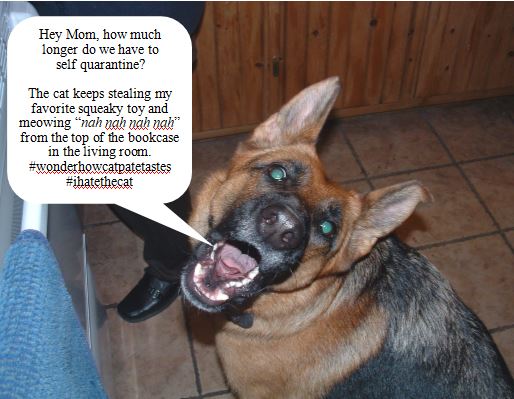
- Talk about some of the things you have in the inn and WHY you like them and use them. You use Molton Brown, do some posts about the products, give some history about it, tell people WHY you picked that line. You have a local painting company that you support, write some posts about them, help others and the return will come back when it’s time. (Don’t forget to take some pics from around the Inn)

While I normally steer innkeepers away from being too personal in their posts, yes you want some personality to come through and be engaging, but not share TMI (Too much personal information, I had someone ask me yesterday what that meant), speaking from the heart is not going to hurt here. This is community time, not sales time.
I think one of the bright spots in all of this hardship and I am already starting to see it locally and across professions and groups, is more people coming together (while practicing social distancing which is ironic) and working together for common goals and the common good. I hope that when all of this is passed, that this continues.
What can you do to get ahead NOW?
- Look through past posts on Facebook that were non-sales related or soft sale related and recycle them. Go ahead and mention it as a blast from the past post too if you would like.
- Get ahead and write up posts for when this is over, print out some marketing calendars and pre-select when and what days and times you are going to post.
This will give you a basis for how many and what kind of posts to come up with.
This is something innkeepers should be doing anyway but practicing this now if you are not already doing it, gets you into the gear of when things are back to normal and then you will hopefully start doing it automatically.
If nothing else at least do the holidays, any big events that you are pretty sure are going to still be on, i.e. after August? September? And any posts for specials or offers you do every year.
- So, if you do teas start getting ahead of pre-writing your posts and when we are back and busy again, you have them all set and maybe a little extra time to get ahead on future ones too at that point
- Get photos together, date them and label them, date the posts and put them in order, in a folder or folders where you can find them again and if you use the Facebook Scheduling tool, go ahead and schedule them in.
- Write up your posts in MS word, Notepad, Google docs or however you want to organize them, there is no bad or wrong way to do this.
Example:
Every year in the Lake Sunapee Area of New Hampshire, we have the Annual Craftsmen’s Fair. Usually, B&Bs and hotels and motels in the area are completely booked up. This year (if it happens, fingers crossed) it will be August 1st to the 9th, 2020. Hundreds of master craftsmen will showcase their one-of-a-kind arts and crafts at the Mount Sunapee Resort in Newbury, NH.
This is the kind of event that most properties will post online about at least once if not more leading up to the event. So, to use this “as an example”.
The start date is August 1st. In a normal season an inn would start posting about this mid-summer and in this particular case (depending on how things are going) we will stick with this for this example. I as an innkeeper want to get ahead of the game, I either have photos from past Craftmans fairs AND/OR I can buy them from a stock photo company AND/OR I can reach out to some of the 100s of craftsmen who will be there and request permission to use some of their photos and make sure it’s noted that you will be giving them credit and a link back to their websites.
You don’t have to follow this order or format, this is just to give you an example of pre-writing up posts to get ahead.
First post: We are so looking forward to the annual Craftman’s Fair this year. Last year we had guests from all over Etc. Etc.
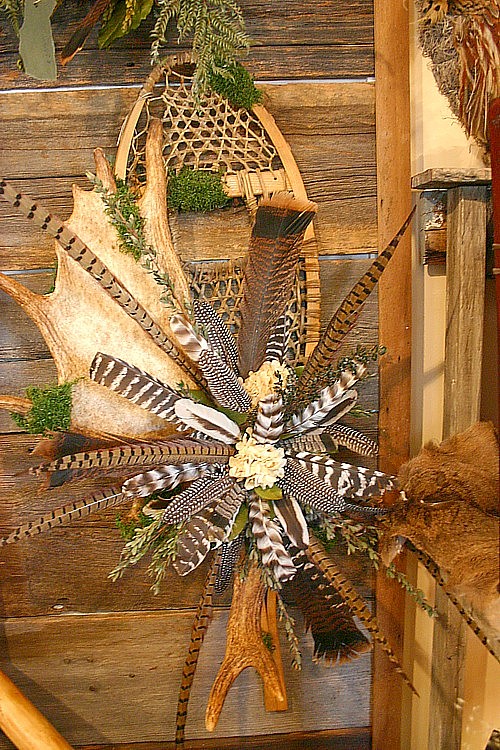
Second post: write about one of the artists, or do multiple posts about the artists, make sure you link to their websites and social media if they have them, Etc. Etc.
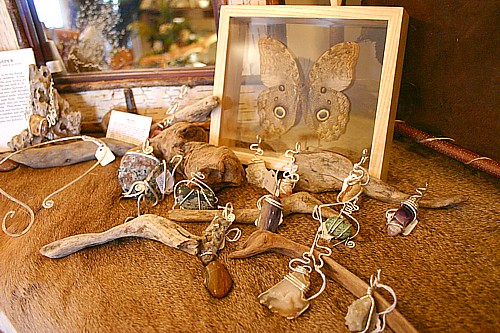
Third post, talk about something you bought for the inn last year from the fair (with photo or photos of same) Etc. Etc.

Fourth post, By the way we fill up fast, make your reservation soon Etc. Etc.

Fifth post, Every year we volunteer at the chamber booth, we love doing it because we meet so many people. Etc.
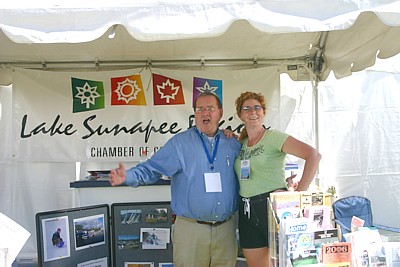
I find it easiest when you are ahead of this to split your posts into topics/themes and put them in different documents. I like to use Google Docs for this https://www.google.com/docs/about/ so you can create both folders for the documents and associated folders, but you can also have one central document (ie your marketing schedule) linking to multiple sub-documents.

I also like to keep an online document in Google Sheets that link directly to websites or online tools that I use very frequently. Yes you can bookmark things, but I gave up when I had hundreds of things bookmarked and even putting bookmarks into folders was a pain because you had to remember which folder they were in. Using the Google docs suite (hey it’s free) to help get organized can be very useful for doing your online marketing. It is pretty much just like MS Office but even a bit more simplified.

I do not know which direction things will take us in, but learning more about social media, how to use the platforms, have a strategy can be useful for any type of business, so if you end up going from innkeeper to realtor or another profession at some point, these are all useful transferable skills. In Restore, Engage, Aggregate, De-stress and You for Innkeepers. I added quite a few links to other posts with resources, so if you are looking for something specific you may find it there and if you can’t find it please let me know and I will track something down for you.
Go forth and get ahead so you can get some heads in beds when the time comes. New Hampshire my home state just issued a stay at home order, so at least maybe I’ll get to catch up on some more blogs myself 🙂
And on a very personal note: I would pretty please ask, if people catch grammatical errors on anything I put out, please be kind enough to let me know by email or direct message instead of posting something in a forum. I do run these through grammarly and if time I ask someone else to proof them. I am dyslexic which quite frankly is non of most people’s damn business but getting snarky comments about a phrase “not being grammatically correct” tends to get me down especially when I am trying to help and working a bazillion hours overtime. ☹
by Heather T. | Mar 21, 2020 | Bed and Breakfasts, Blog, Email, Email Marketing, Lodging, Marketing, Operations, Opinion, Social Media
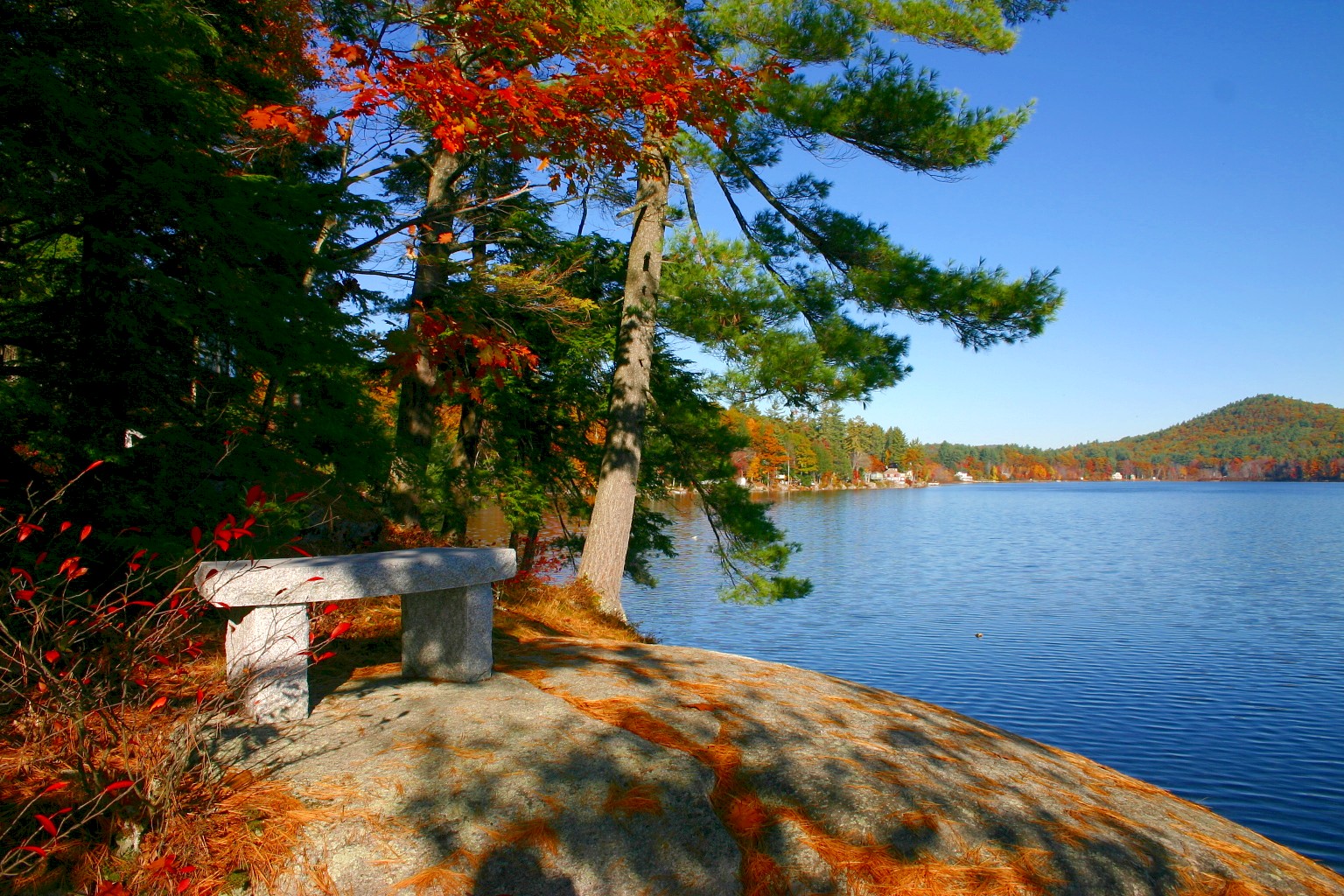 Restore, Engage, Aggregate, De-stress and You = READY
Restore, Engage, Aggregate, De-stress and You = READY
I was talking to one of my innkeeper friends this morning and she said, “It’s funny, we are very depressed because no bookings and everyone has canceled on us for the next few months, not sure how we are going to make it”, but on the bright side, and that I could relate having worked in restaurants for 20 years, this is the first time in 4 years they have had a weekend off.
We ended up talking for a while early this morning and she asked if I could come up with a list of suggestions, not just marketing, but some marketing direction as well as other thoughts, of some things innkeepers could do to be proactive in this very unexpected downtime.
So here goes…….
Are you READY?
In popular Prepper jargon, we have reached S.H.T.F. status (S.H.T.F: Sh*t hits the fan (alternate: stuff hits the fan)) for the innkeeping industry.
I would prefer to think of this as W.A.A.I.T.T. (We are all in this together and “wait” as in this to shall pass).
Well, what to do in downtime? Back in 2012, I had written, Why it pays to sleep around for bed and breakfast owners, I bring this up because I had wanted to do a follow-up article late last year about a place I had stayed at that was top notch but having the owners/innkeepers/management stay in each room would have taken it up even one more notch.
Needless to say, it’s one of several hundred blog posts started and life (as an innkeeper you can relate) and work got in the way of writing it fully. But every property can up their game a bit.
Now: Step One, Take a vacation in your own inn, but use it to fix things, observe things, make them better…..
While your inn is either closed to the public or does not have reservations I would challenge innkeepers to pack their bags for a two-night minimum stay including incidentals, i.e. your big bottle of shampoo and can of shaving cream, go ahead and pack it so you are not using the in-room amenities, but also because it’s not like TSA is going to nab you for bringing anything over 3.4 oz. ?
Pack as if you were going on vacation and also as if you were going on a business trip, cell phones, cords, laptops, the works.
With one prerequisite, you need a notepad in the loo and a notepad in the main bedroom and any other rooms (example a suite with sitting area) with writing utensils, and no it’s not in case you run out of toilet paper. ?
Unpack or get comfortable just like you would if going to stay at another B&B. Then observe, REALLY observe. See those small ding marks on the baseboards? You’ve cleaned and dusted them a million times and noticed them but not “really” noticed them, fix it now.
This is what the notepaper is for, make notes if you can’t fix something right at that very moment and make sure you get back to it and do it this time.
In the bathroom is there room for your makeup case and your partner’s knickknacks on the sink and or shelf? Is the lighting really “that” good?
When you take a shower, can you reach the towel rack easily and is there a place to hang it to dry that works?
I’ve lost track of places that have hooks galore in the bathroom but oddly enough there seems to be some sort of magnetic polarity between the hook and towel as they never seem to want to stick together…… Make notes, now is the time to move that rack, etc.
Breakfast time. Go make breakfast as if you would for guests, then go BE the guest, sit at every seat and every table and eat and observe.
If you have a purse, bring it, is there a place to put it or can you hang it on a chair? If you are going to go out right after, bring your coat, is there room between chair and next chair to put it comfortably? And observe, observe, observe.
This reminds me of a friend who had an inn up here in NH, she had glowing reviews but very occasionally an odd one, not bad just a little odd. We did the dining room flow test (i.e. how people move around and spatial distance between tables and chairs to walk as well as check sightlines, one table of two had a viewpoint from a guest’s perspective right into the little bathroom that adjoined the dining room. What do you see? Test every chair and every point of view.
Wait…..before you take a bite of the food you made, whip out your cell phone and take a slew of photos, be one of those obnoxious Instagrammers.
And make a note, is the lighting good enough for decent photos? If not, what can you do to fix? Bonus, now you have extra photos for marketing……..Food Photography Tips for Bed and Breakfasts might be helpful if you want to up the visual game a bit.
Now go clean up…….or don’t, remember you ARE supposed to be on vacation so do it later. Make it a working vacation. Go take a walk around your neighborhood. I don’t know how many innkeepers I’ve talked to that either have never actually walked to what is around them for a several mile radius or they go out and they walk, but just to walk, i.e. go out and get exercise, but don’t actually take a lot of notice of what is around them.
Take your phone with a full charge and go and take A LOT of pictures, make some notes, actually see and observe the lovely things locally to you that you probably never noticed before. The hidden springhouse covered by wisteria, the small park bench hidden behind the bushes. That great little antique shop (now closed because of the crisis but will reopen) but you never knew or noticed because they don’t have a presence online. Take MORE pictures and don’t forget to wave to your neighbors and share a smile.
Go back to the inn, rinse, repeat for a few days.
Now do a deep clean of the room, wash all linens and suggest bagging them in plastic until the next usage. Document document, document the cleaning of the room so when we get through this and reopen, A. you are all set to go and B. You have proof (take some pictures too) that the room has been deep cleaned and sanitized and that you, the innkeeper were the last person to stay in it.
Now go on vacation in another room, rinse, repeat.
And do some of these other things while you have some downtime in between having weekends off for the first time since you became an innkeeper. I say that tongue in cheek, but I reference what my friend the innkeeper said to me at the start of this post….
- Do some videos, do A LOT of videos, small 1-2 minute clips, virtual tours are good, do a video walkthrough of your inn with commentary or some videos of the area, with commentary. Learn how to leverage Youtube. A great resource for learning Youtube is Youtube Creator Academy, it’s free and it’s super helpful.
- Test some new recipes out, take LOTS of pictures. If you don’t have the ingredients or don’t want to use up food, hey you have to eat anyway, but if you don’t want to experiment now, go research some new ones to try when you are back up and with guests again.
I love to find new recipes or at least in my case, some ideas from:
And many more, both Taste Cooking and Epicurious have great email newsletters with recipe suggestions.
- Create a marketing plan for the rest of the year and start compiling content and pictures. We hopefully will be over this by midsummer or hopefully sooner, what holiday can you target and get pre-prepared for right now?
One of the biggest complaints I hear from innkeepers when talking about planning their marketing and social media, is “we don’t have time”. You do now, take advantage of it!
How to Write a Social Media Strategic Plan for Bed and Breakfasts and Planning Ahead for Your Bed and Breakfast Promotions might be helpful.
- While restaurants and other businesses may be closed or operating in a limited capacity, now is the time to make those good relationships and network, pick up the phone, learn a new skill and try video conferencing. Making those valuable connections and do some deals so that when everything picks back up, your inn and the businesses you and your guests engage with are all ready to rumble.
- Do a deep clean of the inn, and I know some innkeepers are not able to find cleaning supplies, do some outreach to a local restaurant who may be closed or operating in a limited way, do they have some cleaning supplier (or even food if needed) they want to barter or sell?
- Put a plan in place for if this happens again or something like it. While it’s too late to get business interruption insurance, for example, investigate who offers it and rates and be prepared.
- Take some time and educate yourself so you can better help your business and be more informed and less likely to be snowed by an unscrupulous company Google Analytics Academy for instance is free.
And most of all, while we are all supposed to be practicing social distancing, it doesn’t mean you have to practice social isolation. Reconnect with some old friends online, make some new. Start some virtual networking meetings. An innkeeper told me they are now doing virtual tea parties as well as virtual happy hours, sounds like fun to me!
by Heather T. | Feb 4, 2019 | Blog
 At a recent innkeeping conference I did a session for innkeepers on protecting themselves and their businesses in terms of computer related things, both online and offline.
At a recent innkeeping conference I did a session for innkeepers on protecting themselves and their businesses in terms of computer related things, both online and offline.
Several people asked me if I could share the checklist I had made up and I thought it might make a helpful blog post.
Online Security Checklist Immediate Action: (estimated time to review all-under 2 hours)
- Switch Browser to Google Chrome, Safari or Firefox if using Internet Explorer. (1 minute to find, 10 minutes or less to install).
- Login to all social media accounts and enable two factor authentications. (10 minutes or less).
- Review Important Passwords, change if simple or using things commonly known or easily guessed. (10 minutes or less).
- Who is your domain name through? Do you have access? When does it expire? Is the credit card up to date? (10 minutes or less).
- Who hosts your website? Is there emergency contact information for it? Is there a website backup, where is it stored and how can it be restored? (10 minutes or less).
- Do you have an antivirus program? Is it up to date? (10 minutes or less).
- Do you have a malware program? Is it up to date? (10 minutes or less).
- Enable program(s) or check to see last time updated, file backups (10 minutes or less).
- Check router to see if it needs to be updated/patched, call your cable company if in doubt (10 minutes or less).
- Purchase a safe (ETL Verified fire at least 2 hour rated) and other external digital backups (external hard drive and thumb/zip drives) keep offsite with a copy in the safe.
- Review and initiate all weekly and monthly To-Dos .
Weekly Security To-Dos: (Under 10 minutes)
- Check to make sure antivirus and malware programs are running and up to date.
- Make sure computer/tablet/mobile phone operating systems are up to date and patched.
- Check to make sure files are being backed-up.
Monthly Security To-Dos: (Under 20 minutes)
- Check/Review Installed Browser Plugins (Called Extensions in Safari), disable and delete any you are not 100% sure of. You can always reinstall them later if needed.
- Make Sure Internet Browser Is Up to Date.
- Check/Review Social Media Channels to see which applications have access to the accounts, disable and delete any you are not 100% sure of. You can always reenable them later if needed.
- Review passwords to primary accounts, change and/or rotate.
- Make sure computer/tablet/mobile phone operating systems are up to date and patched.
by Heather T. | Dec 13, 2017 | Bed and Breakfasts, Blog, Equipment, Lodging, Operations

Knives have come a long way since I graduated from the Culinary Institute of America in 1992, plus there are a lot more brands out there that were not available than. Ask any professional chef or anyone else that loves cooking, whether for pleasure or for a profession, you will get a completely different answer as to the best knives, the best brands and their favorite type of knives. So this article aims to be more informational than opinion, so that the reader can choose their own with more direction.
I personally have always had (and still have) primarily Wüsthof and Henckels (J.A. Henckels) knives, and Dexter (Dexter Russell) for the ones I can badly abuse. My original knives that I used while cooking professionally, I still have almost all of them (several many inches shorter due to years of sharpening-photo above of many of them) with the exception of a boning knife that met a sad end when my husband snapped the tip off (he has since replaced it for me, such a sweet guy). A good knife lasts for a very very long time with TLC, and it’s something to keep in mind when shopping for knives, because you might go into some sticker shock looking at good quality ones, “Just HOW much is that paring knife????”. A good knife will last you decades, and can be kept in the family for many generations. I still have a Wüsthof utility (paring) knife that my Grandfather bought back in the 1920’s before he immigrated from Norway to America, and it’s still a great knife, and it still holds an edge.
Knives are a matter of preference. A lot like a car, there are certain things you want to look for when knife shopping. I would suggest adding to your knife collection slowly. Sets are great, but either you outlay a huge amount of money for a good set, of which you will realistically only use half of the knives a lot, and the others rarely, if at all, or you buy an inexpensive set and you get what you pay for, OR you can think about what you actually need, and invest in them slowly, which is what I would recommend.
Knife Storage:
Storing your knives properly is very important, if you must keep knives in a drawer, I would suggest either getting a custom rack insert for the drawer, or buying plastic knife guards for your knives.
Wood block storage is also very popular for knives; the two things I would caution users about is: don’t, under any circumstances, put your knives away wet, while wood doesn’t hold bacteria as well as plastic, if you do get any type of food contaminant or other particles in the holes you can have problems. When placing knives into the block and removing them, make sure you sheathe and unsheathe the knives with the blunt edge of the top of the knife coming into contact with the knife slot, and not the sharp side. This will help maintain sharpness.
My personal favorite for knife storage is a wall mounted magnetic strip, you can see all your knives at a glance and the risk of them dulling while coming into contact with something else is minimized. The magnets are strong, so be careful when placing your knifes on the rack, as improper placement can also cause some damage.
Some basic rules for knives:
- Always dry your knives after use.
- Never put them in the sink if dirty, or in a sink filled with water. (while this is common sense, I’ve lost count of the number of B&Bs (and sadly restaurant kitchens as well) I’ve visited that have been guilty of doing this.) While it’s not only extremely unsafe, you risk causing damage to your knives.
- After sharpening a knife, rinse well before use. I prefer washing it and than drying it, but don’t go directly from sharpening to cutting, at least wipe it down if nothing else.
- Keep your knives sharp! A dull knife will cause more damage and rip the skin if you cut yourself, vs a clean cut from a sharp knife which will heal faster and cleanly.
- Never put your good knives in the dishwasher! The wash cycle in a dishwasher vibrates silverware against your knives and contributes to dulling. It can cause delamination of some types of handles, and cause rivets to come off or loosen contributing to unsafe knives, plus most dishwashing liquids, detergents or pods contain caustics ingredients which can damage and pit your knives.
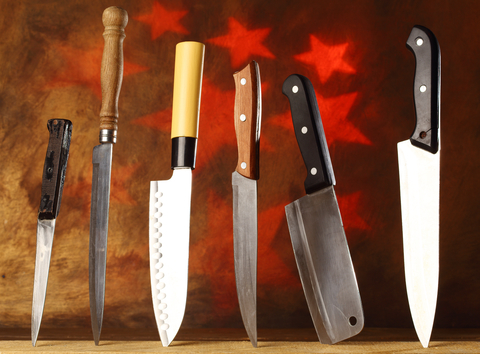
(Look at the above stock photo, look at the knife on the far right side, a rivet is missing and the handle is cracked, leading to an unsafe knife, as the partial detachment from the tang could result in the knife coming apart during use. The crack can also harbor food particles and bacteria.) You should never do this to your knives, even good quality ones can break a knife tip doing this.
Things to look for when knife buying:
The Tang: I really recommend buying full tang knives. Over many years, using other’s knives or “house” knives (what many professional kitchens have for cooks in addition to their own), I’ve found that knives with partial tangs have a short shelf life, they break and they are dangerous when the adhesive that connects the knife tang with the handle comes apart, especially if it’s being used at the time. I’ve seen many stitches as a result of injury’s caused by partial tang knives literally disintegrating while being used. I recommend meandering over to Lansky Sharpeners, who has a very good overview of knife tangs.
The Grip: the grip is a preference, what is it made of? Plastic, rubber, steel, in some cases cork and other materials. Make sure when you buy a knife, especially a Chef’s knife that you will use for chopping, the handle fits well in your hand and is comfortable, I was never a big fan of Victorinox knives (and they are great knives) because I have smaller sized hands, and the handles never felt very comfortable to me, again it’s a personal preference. Wood grips on knives tend to not hold up well under long term use. When knife shopping you may find a better price online for the knife you want and buy it there, but I’d suggest handling them first so you can see what it feels like in your hand and the balance.
Ever sharp knives: to own or not to own. I admit we have several in my house, I rarely use them but my husband does. If you want low maintenance knives, then yes these are the knives for you, but they are not “really” forever sharp. They do dull with repeated use, and you can’t re-sharpen them easily, sometimes not at all.
Riveting and Joins: When buying knives look for the joins and rivets, and see if the handle moves at all when you push the blade sideways. Good quality knives will have zero give, but many generic knives out there, while they look nice, are quite flimsy and not made for heavy duty use.
What are they made of?
Carbon Steel: this the traditional material used the most for the past few hundred years. It can hold an extremely sharp edge, but it does discolor easily. It will discolor some foods, like onions and citrus, as well as you can actually smell what seems like a chemical odor coming from it, and may leave a metallic taste. This doesn’t mean you shouldn’t use Carbon Steel with these, but it does mean that the acidity in onions and citrus can cause pitting of the blade, if you do use them, wipe the blade down every few minutes in between uses. I find if you are cutting a lot of meat or filleting fish, a carbon steel knife, I personally find, will do a better job as it’s holds an edge the best. Rubbing the blade down with a paste made from water and baking soda when you first get it (and repeat for the first few weeks) helps protect the knife and build up a good patina. Carbon steel knives will change color with use.
High Carbon Stain Free Steel: This is a relatively new alloy that combines the best features of Carbon Steel and new modern alloy metals (Chromium-Molybdenum Steel). Most modern higher end knives are made of this and it’s suggested for professional use.
Stainless Steel: this will not rust or corrode, but is a very poor choice for knives, it’s brittle and it is difficult to keep a very sharp edge on a stainless steel knife.
Ceramic Cutlery: This is a newer process made with modern age ceramics, often zirconium dioxide. Ceramic knives are substantially harder than steel knives, they will not corrode and work well for slicing vegetables, meat (boneless), fruits and bread. The downsides to ceramic, is it’s just like a plate, if it gets dropped, it can shatter or chip. Ceramic knives are not recommended for use with hard to cut items, like bones or frozen foods. While ceramic holds an edge a lot longer than carbon steel, once the edge degrades it needs a professional to re-sharpen it.
Damascus Steel: This is not “true” Damascus, that art has been lost for a long long time, these knives are basically laminated pieces of steel together, and quality can vary a huge amount depending on the maker. If you have a magnetic knife strip that can display your knives where your guests can see them, you will have the oh and ah factor, as they can be quite beautiful, but most of these knives will not outperform a regular good quality knife.
Some Quality Knife Brands:
Aritsugu http://aframestokyo.com/aritsugu.html (there are other sites out there that carry Aritsugu, the Aritsugu site itself is in Japanese).
Global http://globalknives.uk/
J.A. Henckels http://www.zwillingonline.com/
Masamoto http://www.masamotochefknives.com
Messermeister https://www.messermeister.com/
Shun https://shun.kaiusaltd.com/
Victorinox (formerly R.H. Forschner by Victorinox) https://www.victorinox.com/global/en_US/
Wüsthof http://www.wusthof.com
Honorable Mentions (great for knifes that can take some abuse, inexpensive and good for general purpose knives)
Dexter Russell http://www.dexterrussellcutlery.com/
Additional Knives:
MAC https://www.macknife.com/ (While reputedly a great knife brand, Thomas Keller and Charlie Trotter apparently love the line, the quality does seem to be there and it shows well in use.) I can’t say with certainty that this knife line will hold up well under long term use. I’ve test driven several of these, but unlike any of the above knife brands that I have used over the course of many many years, this one is a newer addition to the traditional brands. If you do decide to buy one of these, I would suggest the MTH-80 Professional over the TH-80 Chef Knives. The MTH-80 while the more expensive, is the better knife.
If anyone has any interest, I can do a follow up post on this with a suggested list of what to buy (or at least start out with) if you are just buying a bed and breakfast and need to stock the kitchen with equipment.
And an additional article with some useful tips 25 Tips And Tricks About Chef’s Knives- Every Chef Should Know.
by Heather T. | Aug 9, 2017 | Blog, Lodging, Marketing, Social Media
Did you know you can download a full backup of your Facebook business page, including all the photos, videos and posts you have posted since you started your page?
Why back up?
- Ever look for that illusive post, you KNOW you posted awhile back but couldn’t find?
- Many innkeepers upload great photos of the inn and the surrounded area to their business page, but never back it up to their computer for use in other social media, or to have a copy for their media kit or other advertising?
- Have you uploaded regular videos to your page, or Facebook live videos and want to re-purpose them? Social Media Examiner (one of my favorite sites) wrote a great post last year: How to Repurpose Your Facebook Live Videos which gives some great ideas about re-purposing and gives instructions for downloading one video at a time, but downloading the archive takes a step out.
You can also download individual albums, which I would also recommend doing frequently if you don’t want to download a full archive.

Downloading the full archive though is a piece of cake, once you select “download the archive” it will walk you through some additional steps and it will also send you an email letting you know the download is ready.

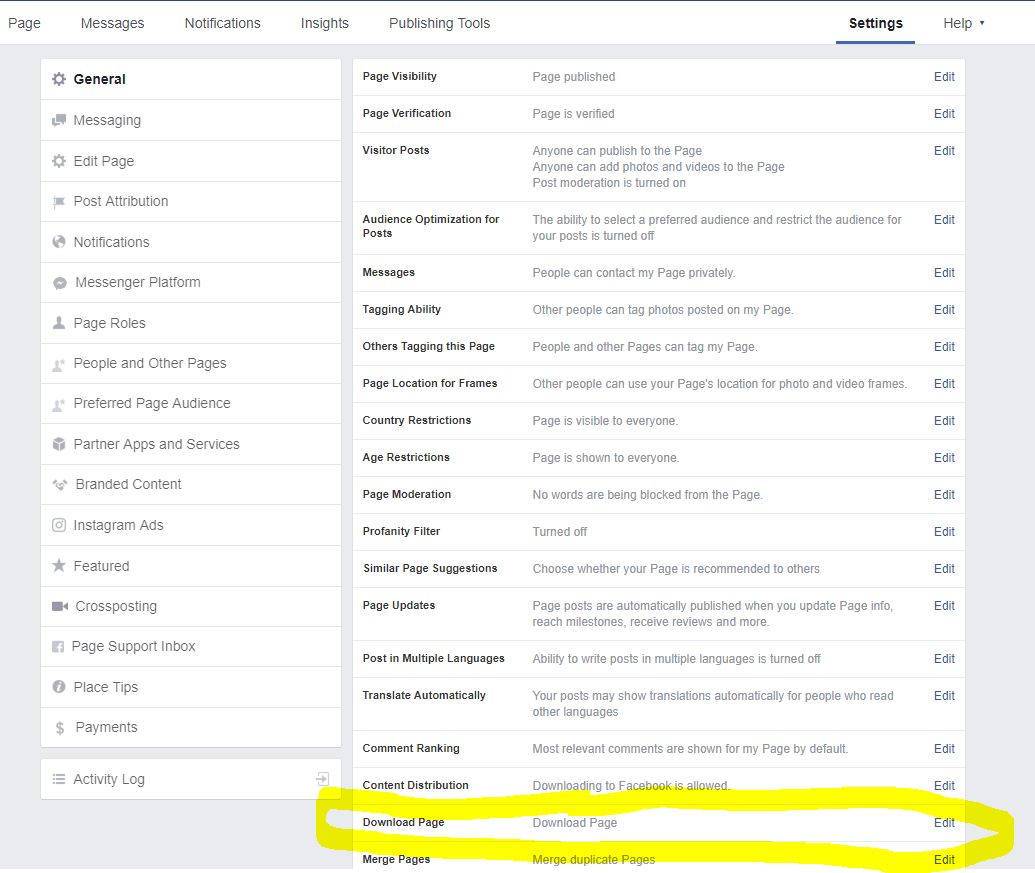


Don’t forget you can also back up your personal Facebook account photo albums, which is also worth doing occasionally, especially mobile uploads.

Facebook may also be rolling out a new feature for Facebook admins, I have only seen this option from new pages that have been created, but I hope it’s not just a test, but something they will add to all pages for the admins, it would be great to be able to invite connections and give them a more personalized invite than just “like this page”. When you receive an invite to like a page, a small text editable invite looks like it can be attached to it.
There are some new options for Facebook group admins if you want to check out the changes, click here for a brief overview.
by Heather T. | Jun 5, 2017 | Blog, Lodging, Marketing, Websites
 Image Editors: A good image editor is hard to come by, and rather than spending money on a desktop or cloud version of image editing software, many of which can have a high and time consuming learning curve, take advantage of some of the free online editors out there. All are easy to use and have different effects and options. There are many other free editors out there as well, but be aware some may try to install add-ons or malware on your computer, or simply have an excess of pop-ups or ads, if a site asks you to download or install something, STOP right away. When you go to the editors, before you click on a link or button, look carefully at the page to make sure you are clicking on the correct thing. The snapshot above is a good example, many people will log onto the Adobe site and think the “try it free” is the editor.
Image Editors: A good image editor is hard to come by, and rather than spending money on a desktop or cloud version of image editing software, many of which can have a high and time consuming learning curve, take advantage of some of the free online editors out there. All are easy to use and have different effects and options. There are many other free editors out there as well, but be aware some may try to install add-ons or malware on your computer, or simply have an excess of pop-ups or ads, if a site asks you to download or install something, STOP right away. When you go to the editors, before you click on a link or button, look carefully at the page to make sure you are clicking on the correct thing. The snapshot above is a good example, many people will log onto the Adobe site and think the “try it free” is the editor.
My personal favorite for doing social media headers and other social media images that need specific image dimensions is https://www.canva.com/.
And size matters! If you are using these tools to edit photos and other images make sure you size them for the web! It speeds up loading time of images on your website. A great online photo size minimizer is http://www.jpegmini.com/. They do have a paid downloadable version as well, but for the price you can buy Adobe Photoshop Elements, which gives you quite a bit more options.
Web/Submission Forms: Are you looking for some decent submission forms for your website or website in progress? While there are a variety of plugins for WordPress, as well as some templates have submission or other types of forms already integrated into them, they may not have all the options you may be looking for, or your website may be based on another type of website platform like a basic HTML site, Drupal or Joomla. Some WYSIWYG (What You See Is What You Get) website builders like Wix or Weebly may have forms in them as well, but again they may not suit all your needs.
There are several caveats to using forms on your website, many people, ie. guests and potential guests don’t like them, they prefer email, phone or a text, and second, but also very important, is all of them have glitched (and some permanently) at one time or another. If you have a form, whether you are integrating a new one into your site or you already have one, make sure you test it frequently! I know quite a few B&Bs out there with submission forms that dont’ work. Why check? Lost reservations perhaps??? While I do understand that some innkeepers prefer not to put their email on their websites because they think spammers scurry around the web looking for email addresses, this is not the case.
Forms do have their places though, if you offer catering services, host weddings or events and engage in any type of activity at your inn which requires getting an extensive amount of information from a guest, than forms are terrific for that use. Or a form (like a Google form) with a link can be sent by email to someone when more information is needed for an event. Google forms are on of my favorites because they are easy to set up and all of the information migrates into a spreadsheet, so information can be viewed individually in the forms itself or aggregated. This can also be useful if you are sending an survey or a request for additional information and feedback to a guest after they have stayed. The results also turn into graph formats, so if you send out 200 requests and 190 said yes to something and 10 said no, you would have a chart that gives you the results in easy to use format.

I would suggest one of my favorite alternatives to a website submission form and that is a fillable PDF. While most small businesses don’t have, and have very little use for, the full program to create fillable PDFs (Adobe Acrobat Pro $199+), there is a terrific free online alternative at http://www.pdfescape.com, you don’t need to download anything or even sign in, just use the online version.
I would suggest before integrating a form into your website to make sure it is secure (the site has an SSL certificate), even if you are not asking for confidential information. While SSL compliance is something Google is pushing for on all websites, an exterior form still needs to have SSL compliance, so if you have WordPress and are exploring additional plugins, check the plugins security, reviews and reliability ratings before installing.
















 R
R At a recent innkeeping conference I did a session for innkeepers on protecting themselves and their businesses in terms of computer related things, both online and offline.
At a recent innkeeping conference I did a session for innkeepers on protecting themselves and their businesses in terms of computer related things, both online and offline.







 Image Editors: A good image editor is hard to come by, and rather than spending money on a desktop or cloud version of image editing software, many of which can have a high and time consuming learning curve, take advantage of some of the free online editors out there. All are easy to use and have different effects and options. There are many other free editors out there as well, but be aware some may try to install add-ons or malware on your computer, or simply have an excess of pop-ups or ads, if a site asks you to download or install something, STOP right away. When you go to the editors, before you click on a link or button, look carefully at the page to make sure you are clicking on the correct thing. The snapshot above is a good example, many people will log onto the Adobe site and think the “try it free” is the editor.
Image Editors: A good image editor is hard to come by, and rather than spending money on a desktop or cloud version of image editing software, many of which can have a high and time consuming learning curve, take advantage of some of the free online editors out there. All are easy to use and have different effects and options. There are many other free editors out there as well, but be aware some may try to install add-ons or malware on your computer, or simply have an excess of pop-ups or ads, if a site asks you to download or install something, STOP right away. When you go to the editors, before you click on a link or button, look carefully at the page to make sure you are clicking on the correct thing. The snapshot above is a good example, many people will log onto the Adobe site and think the “try it free” is the editor.